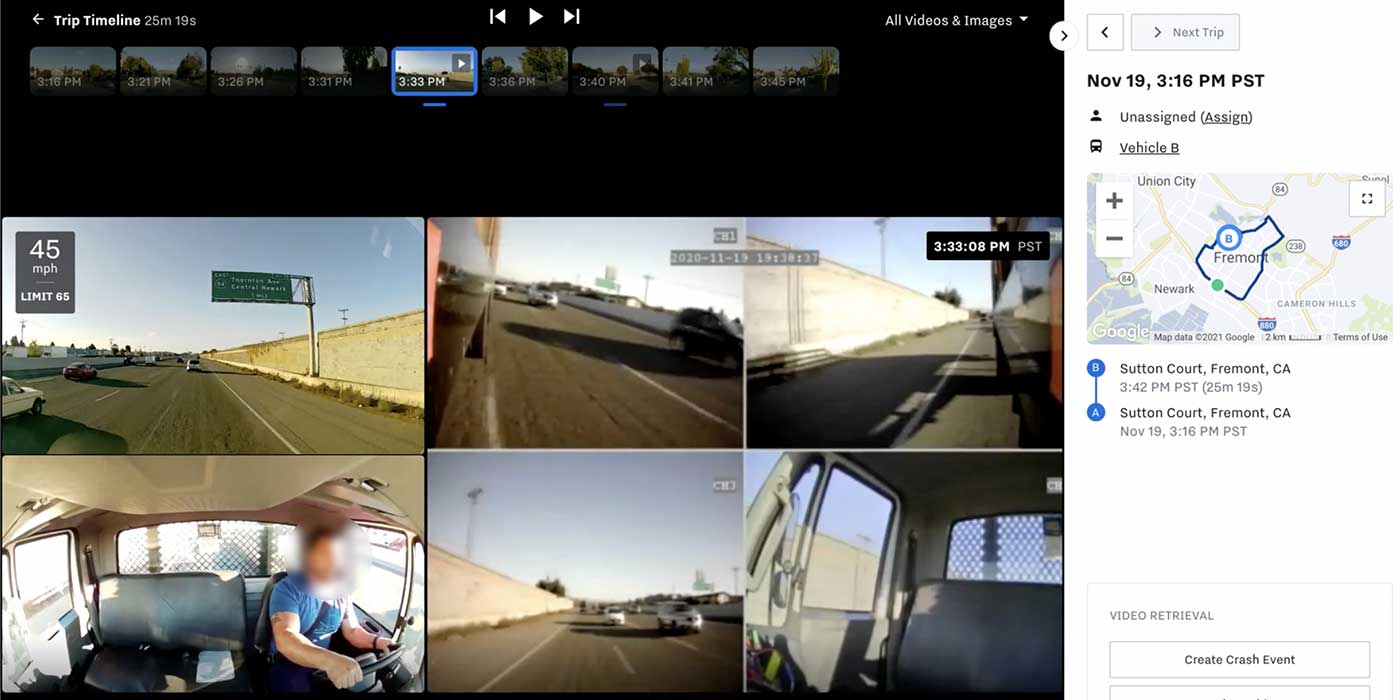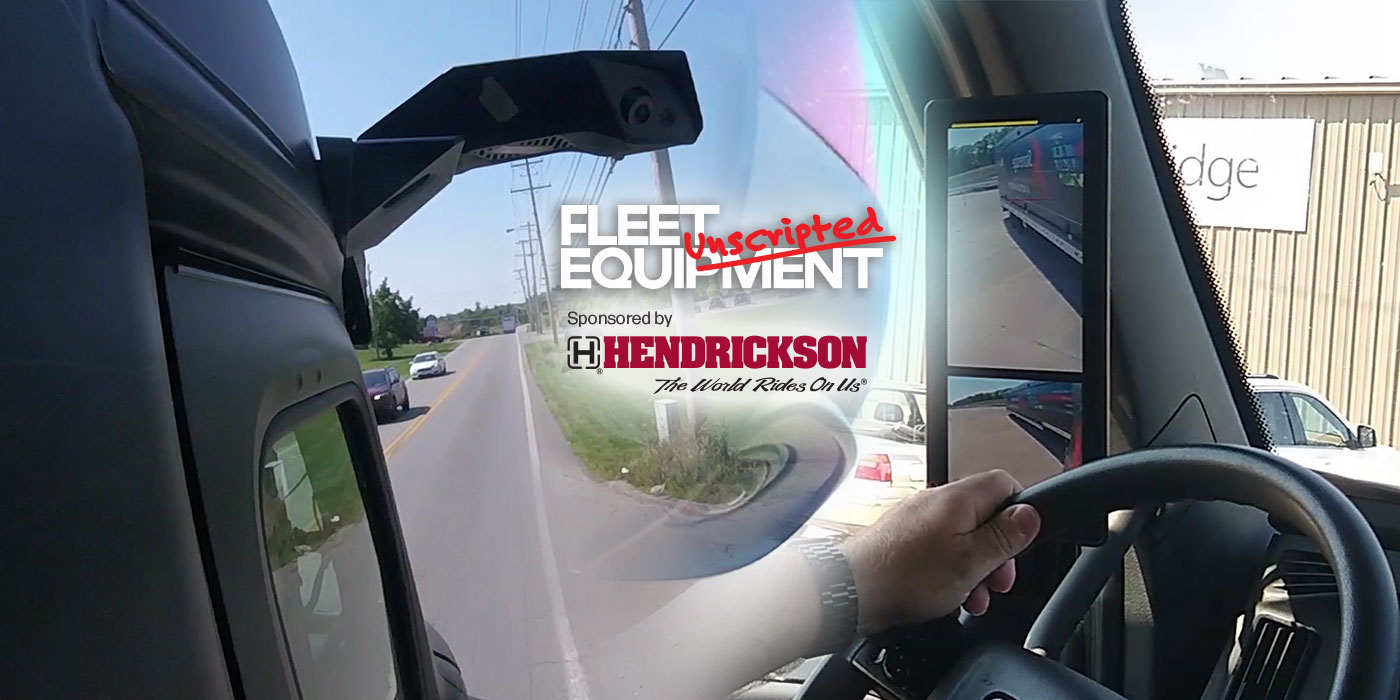Truck drivers face many obstacles as they go about their daily commutes. Lousy weather, distracted drivers and ever-changing road conditions make the typical day an unpredictable gauntlet.
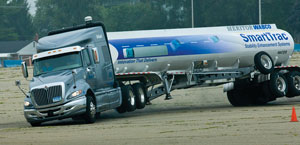
In fact, the “typical” day is anything but, so fleets are frequently looking for the latest, greatest piece of technology to lower accident rates and prevent downtime.
But if you’re searching for the most important safety component you can have in your trucks to help deal with life’s variables, congratulations—you already have it. Experts say the driver is the key ingredient in getting your vehicles and cargo to their destinations and back again.
Sometimes, however, even the best driver is faced with a split-second decision while on the road. Thanks to state-of-the-art safety systems available to fleets at the OE level, fleets, truck drivers and other highway users are safer than ever.
Today, advanced safety technologies from Meritor WABCO and from Bendix Commercial Vehicle Systems
can help drivers reduce vehicle accidents and help fleet managers and owners lower overall vehicle operating costs. Designed for vehicle applications such as commercial trucks/tractors and trailers, construction, fire and rescue, bus and coach and military, computer-controlled systems can help keep the truck pointed in the right direction with all its wheels on the ground when the unexpected happens.
But these systems can’t do it alone. “Advanced safety technologies can never replace alert, safe drivers practicing safe driving habits, as well as continuous, comprehensive driver training,” says Fred Andersky, director of marketing (controls) for Bendix. “But full-stability technology (is) available to assist whenever the driver might need a little extra help.”
In other words, explains Alan Korn, director of advance brake systems integration for Meritor WABCO, it’s a good supplement to, not a replacement for, good drivers.

“While an alert, skilled driver remains the most important element in safe operation, stability controls are proven systems that can help a driver maintain control of the tractor-trailer combination and reduce the likelihood of a rollover,” says Korn.
Two of these systems, Stability Control and Collision Safety, use advanced technology to make good drivers even safer in tough situations and can save dollars, equipment and lives if used properly.
Stability control
Meritor WABCO’s SmartTrac is a suite of anti-lock braking, automatic traction control and stability control systems that uses electronic control units to seamlessly assist the driver out of certain situations. Electronic Stability Control (ESC) combines Roll Stability Control (RSC) with the added capability of yaw or rotational control. ESC can reduce the risk of vehicle instability while in a slippery curve or taking an evasive action, preventing jack-knife and drift-out conditions through select braking of the tractor and application of the trailer brakes. If loss of stability is detected, tractor-trailer speed is reduced through engine control and application of the engine brake, tractor and trailer foundation brakes. Currently, Meritor WABCO has installed ESC in thousands of heavy-duty trucks and specialty vehicles.
The RSC element continually monitors conditions that can lead to a rollover and can automatically de-throttle the engine and apply the engine brake, and drive and trailer axle foundation brakes, to reduce tractor-trailer speed when lateral acceleration limits are about to be exceeded.
According to Kevin Romanchok, Bendix product line director for electronics, full-stability technology systems—such as Bendix ESP—recognize and mitigate conditions that could lead to rollover and loss-of-control situations sooner on dry surfaces and in a wider range of driving and road conditions, including snowy, ice-covered and slippery surfaces.
“The increase in market penetration shows that fleets are continuing to recognize the benefits of full-stability
solutions for helping to mitigate accidents, improve highway safety, and to increase ROI,” Romanchok says. “Full-stability continues to be an obvious choice for many fleets within the commercial vehicle industry.”
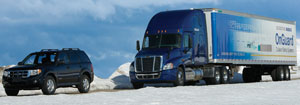
Rick Romer, director of key customer management, Meritor WABCO, agrees that fleets are recognizing the significance of this technology. He acknowledges that the safety benefits of stability control are very attractive to fleets with older vehicles, but says while there has been discussion about releasing stability systems to the aftermarket, that isn’t likely to happen anytime soon.
“When you look at the integration of all the components on the tractor and the vehicle dynamics, you must consider the fact that systems are developed specifically for certain applications and validated for that application with the truck OEM. In the aftermarket, the ability to control, manage and validate the release of the system between brands and engines, transmissions and braking systems is a significant challenge,” Romer explains. “That’s not to say it’s impossible in the future, but right now there are no plans for aftermarket release. It is possible, however, to easily retrofit trailers with stability control. Our RSSplus offers an easy solution for upgrading new and existing trailers with rollover protection.”
Romer says the number of vehicles so equipped will continue to rise through new truck sales. “Right now, my estimation is somewhere around 10% of the Class 8 vehicles have some type of stability control system. Over the past nine years these systems have been coming into the North American market. But when you look at the overall market over the past several years, the high-value line haul tractor today has a much, much higher likelihood of being specified with a stability control system. And depending on the brand and the type of technology, it can be as much as 50% or more that receive the specification part.”
Romer says it really doesn’t seem to vary by truck brand as far as that penetration. Some brands have decided to make the technology standard; others have it as an option—with a high “take rate” of around 50%. Of course, there are other brands where those numbers might be a little lower.
“Right now, it’s becoming available on most platforms of Class 8 trucks, and the percentage is much higher with Class 8 line haul trucks,” Romer says. “Typically, these are the larger fleets with more convincing data on the benefits, so they can see the cost benefit of such a system—the purchase is more clear. Some other segments of the market may be purchasing Class 8 vehicles, but because of the numbers they purchase, they don’t necessarily see a cost benefit calculation that convinces them to spend the extra up-charge for the systems.”
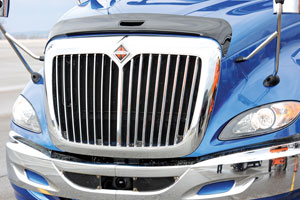
“More and more fleets are realizing the benefits of stability,” agrees Fred Andersky, Bendix director of marketing—controls. “But there are still many more that could benefit. Bendix will continue its ongoing efforts to educate the market on the benefits—both in terms of safety and the financial impact of full stability. It is truly a technology for today and is the foundation for the active safety platforms of the future.”
UMTRI on safety benefits
A study conducted by the University of Michigan Transportation Research Institute (UMTRI) and released by the National Highway Traffic Safety Administration (NHTSA) uses post-crash data to show how stability controls can provide safety benefits:
• If all existing 5-axle tractor-trailers operating on U.S. roads were fitted with RSC, 3,489 crashes, 106 fatalities and 4,384 injuries could potentially be prevented.
• Annual savings from rollovers prevented by RSC are estimated at $1.409 billion; savings from loss-of-control crashes prevented are estimated at $47 million.
• If all existing 5-axle tractor-trailers operating on U.S. roads were fitted with ESC, 4,659 crashes, 126 fatalities and 5,909 injuries could potentially be prevented.
• Annual savings from rollovers prevented by ESC are estimated at $1.527 billion and from loss of control crashes prevented at $210 million.
Collision safety
Let’s face it—sometimes it doesn’t matter how safely YOU’RE driving, if the driver in front of you insists on being an idiot, the unexpected should be expected. Distracted by cell phones, by sandwiches or by singing to the latest song on the radio, while everyone around you may be going in the same direction, you just can’t depend on them to be aware of their surroundings.
Collision safety systems (OnGuard from Meritor WABCO and Wingman Advanced from Bendix) can help keep things from getting too close for comfort.
OnGuard is a proven safety technology that assists drivers in quickly recognizing and responding to potentially dangerous driving scenarios that could lead to a rear-end collision. This system features a forward-looking radar sensor that uses advanced algorithms to monitor the distance, speed and deceleration of a vehicle ahead. It sends audible and visual warnings through an in-cab dash display so the driver is alerted to take action. If the driver does not respond the system will automatically decel the vehicle by automatically reducing engine torque and applying the engine and foundation brakes to prevent or mitigate a potential rear-end collision.
“North America’s leading fleets continue to spec OnGuard to meet their safety standards,” said Kurt Hall, senior director, Vehicle Dynamics & Control, Meritor WABCO. “With a large population of systems running in North America, we are confident that OnGuard provides drivers with a significant safety benefit by helping them prevent rear-end accidents.”
OnGuard is the first radar-based collision safety system to include Collision Warning, Adaptive Cruise Control (ACC) with Active Braking and an “always-on” Collision Mitigation System (CMS), which provides active braking even when you’re not in cruise control. When in cruise control, says the Meritor WABCO team, OnGuard automatically helps the driver maintain a safe following distance. If a potential rear-end collision is developing and the driver doesn’t immediately decelerate the vehicle, OnGuard’s Collision Mitigation System automatically de-throttles the engine and provides up to .35Gs of braking power. It also uses an internal gyro to detect a curve approaching and adjusts the radar beam to see objects around the bend. The system acts as an additional safety measure for drivers, continuously surveying the situation in front of the vehicle and paving the way for safe driving practices.
Bendix Wingman Advanced delivers adaptive cruise control with braking features along with collision mitigation technology. The system builds upon the company’s full-stability technology, Bendix ESP, providing fleets with a system that can help drivers in collisions, rollovers and loss-of-control situations.
Using a radar sensor mounted to the front of the vehicle, the Bendix system delivers both warnings and active interventions to help drivers potentially avoid rear-end collisions, or at least help reduce their severity. The system provides following distance and stationary object alerts that are always available—whether or not cruise control is engaged. When drivers utilize the adaptive cruise control with braking feature, the system will also actively intervene to help them maintain a safe following distance behind a forward vehicle by reducing throttle; engaging the engine retarder; or, if necessary, applying the foundation brakes.
The collision mitigation feature of Bendix Wingman Advanced provides additional interventions—whether or not cruise control is active—by alerting the driver and automatically applying the brakes to help decelerate the vehicle when the system senses a rear-end collision may be imminent. About two-thirds of the available braking power of the vehicle can be delivered through collision mitigation—compared to about one-third through adaptive cruise control with braking. The driver, of course, still maintains control and can add additional braking or steering inputs to help avoid or minimize the collision situation.
“Bendix Wingman Advanced represents another step forward in commercial vehicle safety,” says Andersky. “Bendix continues to build on its commitment to deliver cost-effective, active safety solutions that can positively impact ROI for fleets. Utilizing Bendix Wingman Advanced may help fleets and their drivers in the new CSA (Compliance, Safety, Accountability)-driven environment to maintain a strong safety performance and better scores, which, in turn, may help drive revenue, lower costs and increase profitability.”
Both systems claim ease of use, but as part of this country finally bids farewell to a brutal winter, one can’t help but wonder about the durability of the stability and collision mitigation systems in the harsh elements of everyday transportation. Normal maintenance—if that, says Romer—is all that is required.
“Bad weather, when the vehicle becomes more ‘yaw unstable,’ is when the ESC system is a real benefit to the driver. Roll instability issues are usually faced on dry pavement when the vehicle is going at higher speeds,” says Romer. “Collision safety systems, should there be excessive buildup of snow or ice on the fascia of the system that reduces the effectiveness of the radar, will provide the driver with an alert through the display identifying the issue.”
Romer also says if a radar is misaligned, the system will detect it and notify the driver via an on-dash display screen. However, he is quick to point out that misalignment is unlikely. Vibration and environmental testing ensures it is very robust against normal situations, he explains. Sometimes, a driver may inadvertently kick the sensor while opening the hood or there may be some other odd occurrence, but the sensor doesn’t just get out of alignment through bumpy roads.
“Over the past several winters, we have gained a billion miles of experience on North American roads with our system and we have not had a large number of these types of instances in which snow and ice actually inhibited the radar sensor from performing.
“With more than 10,000 units in operation, it hasn’t been an issue under snowy, icy conditions,” Romer explains.
Drivers’ skill is paramount
Lest truck drivers think they are being relegated to the role of passenger thanks to these safety technologies, both companies are quick to say otherwise. The importance of skilled, alert drivers is still essential to a fleet’s entire safety equation and should not be underestimated with the advent of active safety technologies.
“Active safety technologies do not replace the need for alert, safe drivers practicing safe driving habits, as well as continuous, comprehensive driver training,” Andersky notes. “Vehicle safety remains the primary responsibility of the driver. At Bendix, we are proud to provide innovative and cost-effective technologies to fleets that can help them and their drivers safely navigate our nation’s roadways.”
Romer agrees—he encourages drivers to just do what they have been trained to do and they’ll find an easy transition.
“There’s minimal learning curve, especially with the stability control system. Drivers should just drive the way that is normal and safe, the way they’re trained to drive. They don’t really have to do any adaptation to the way they drive.”
Romer points out that, in some cases, drivers may find the system stepping in where they don’t expect it. If that happens, they should review the situation and see what went into it. “Drivers need to realize and remember that the system won’t let them drive past the limits. Was there something that they had control over and should have been driving at a slower speed or was there an emergency event that they didn’t recognize?” Romer asks.
“Of course, with any technology, there’s a limit to physics. The systems are designed to help them when they are approaching those limits and will apply the brakes when needed. If it’s more of a catastrophic event and the driver is, for whatever reason, unable to avoid the accident, the system won’t be able to avoid it either.”
But the fact remains that drivers usually understand the limits of physics quite well and drive within them, Romer says. “Otherwise there would be a lot more accidents out there.”

